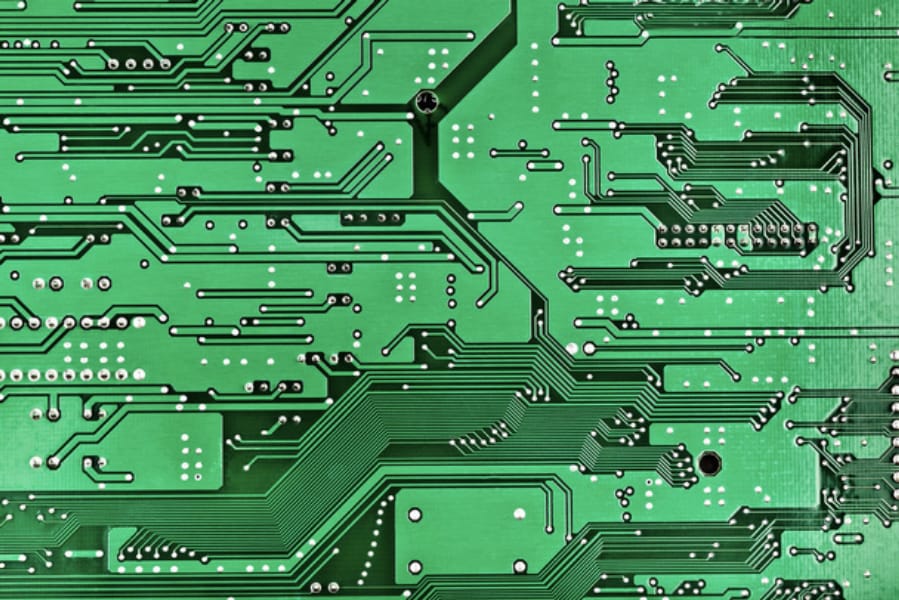Overview of PCB Materials and Performance Characteristics
Overview of PCB Materials
We offer a variety of common PCB materials to meet the diverse needs of different applications. Below is an overview of our commonly used PCB materials, along with their performance characteristics and applications:
1. FR-4 Material:
Structure: FR-4 is a composite material composed of woven glass fabric impregnated with epoxy resin. It typically consists of alternating layers of glass fiber cloth and epoxy resin binder.
Performance Characteristics: FR-4 offers excellent electrical insulation properties, mechanical strength, and dimensional stability. It has a high glass transition temperature (Tg) and good resistance to heat, chemicals, and moisture.
Applications: FR-4 material is widely used in the manufacturing of single-sided, double-sided, and multi-layer PCBs for various electronic applications. It is suitable for both through-hole and surface-mount technologies and supports diverse circuit designs, including digital, analog, and high-frequency circuits.
2. Aluminum-Based PCB Materials:
Structure: Aluminum-based PCBs feature a thermally conductive metal core, typically aluminum or copper, sandwiched between layers of dielectric material, such as FR-4 or polyimide. The metal core provides efficient heat dissipation and thermal management capabilities.
Performance Characteristics: Aluminum-based PCBs offer superior thermal conductivity, allowing effective heat dissipation from high-power components. They have excellent mechanical strength, electrical insulation, and dimensional stability.
Applications: Aluminum-based PCBs are commonly used in high-power LED lighting, automotive electronics, power supplies, motor drives, and other applications requiring efficient heat dissipation and thermal management.
3. CEM-1 and CEM-3 Materials:
Structure: CEM-1 and CEM-3 are composite materials composed of woven glass fabric impregnated with epoxy resin. They typically consist of a single layer or multiple layers of glass fiber cloth bonded with epoxy resin.
Performance Characteristics: CEM-1 and CEM-3 offer good mechanical strength, thermal stability, and cost-effectiveness. They have moderate electrical insulation properties and are suitable for low to medium complexity PCBs.
Applications: CEM-1 and CEM-3 materials are commonly used in consumer electronics, household appliances, lighting fixtures, control panels, and other applications requiring cost-effective PCB solutions.
4. 22F Material:
Structure: 22F is a flame-retardant laminate material composed of woven glass fabric impregnated with epoxy resin. It typically consists of multiple layers of glass fiber cloth bonded with flame-retardant epoxy resin.
Performance Characteristics: 22F offers excellent electrical insulation properties, flame resistance, chemical resistance, and dimensional stability. It has a high glass transition temperature (Tg) and is suitable for harsh environmental conditions.
Applications: 22F material is widely used in aerospace, military, medical electronics, automotive electronics, and industrial applications requiring high reliability and durability.
5. Metal Core PCB Materials:
Structure: Metal core PCBs feature a thermally conductive metal core, such as aluminum or copper, sandwiched between layers of dielectric material, such as FR-4 or polyimide. The metal core provides efficient heat dissipation and thermal management capabilities.
Performance Characteristics: Metal core PCBs offer excellent thermal conductivity, allowing effective heat dissipation from high-power components. They have good mechanical strength, electrical insulation, and dimensional stability.
Applications: Metal core PCBs are commonly used in high-power LED lighting, automotive electronics, power converters, motor drives, and other applications requiring efficient heat dissipation and thermal management.
6. Flexible PCB Materials:
Structure: Flexible PCBs are made of flexible substrate materials, such as polyimide (PI) or polyester (PET) films, coated with copper conductive traces and protective coverlay or solder mask layers. They may consist of single-sided or double-sided flexible circuits.
Performance Characteristics: Flexible PCBs offer excellent flexibility, bendability, and durability, enabling them to conform to irregular shapes and tight spaces. They have good electrical insulation properties, thermal stability, and resistance to vibration and mechanical stress.
Applications: Flexible PCBs are widely used in wearable devices, medical implants, aerospace systems, automotive electronics, and other applications requiring flexibility, weight reduction, and compactness.
These materials offer a wide range of options to meet the diverse needs of PCB applications, from standard FR-4 for general-purpose circuits to specialized materials for specific requirements.
